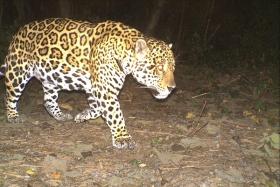5,000 trees planted and doing well in the Atlantic Forest, Brazil
Posted on
In Brazil, 5,000 trees have been planted the Atlantic Forest
Trees planted in the Matumbo Gap of the Atlantic Forest in 2017 are doing well!
5,000 trees were planted, thanks to funding from the World Land Trust’s Plant a Tree programme. The programme plants a tree for a £5 donation.
The trees are all grown from seeds collected from the indigenous tree species of the neighbouring Atlantic Forest. They are cultivated in the nursery of the Reserva Ecológica e Guapiaçu (REGUA) and then planted in the slopes of the cleared area known as the Matumbo Gap.
The Matumbo Gap has been a priority for reforestation. It would create a wildlife corridor between two areas of forest which are under the protection of the Reserva Ecológica e Guapiaçu. The area is funded by the World Land Trust.
The forest is maturing; some pioneer plant species are bearing seeds and fruit, which fees the native fauna, particularly bats and birds.
The Reserva Ecológica e Guapiaçu’s mission is to protect the remaining areas of Altantic Forest and connect fragmented habitats. These areas have been cut off from each other because of clearance for agriculture.
Thriving wildlife can be seen in the state of Rio de Janeiro, thanks to successes from REGUA’s work.
You can be a part of the World Land Trust’s work to support reforestation in Brazil, Ecuador and Kenya through their Plant a Tree Programme.
Native tree species are planted to restore degraded habitats for £5 each. Donate £25 or more, and you’ll receive a donation pack detailing the impact of your support.
BE A PART OF THIS SUCCESS STORY - PLANT A TREE HERE FOR JUST £5
You can also make a donation to REGUA here



